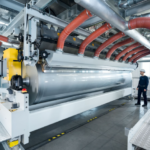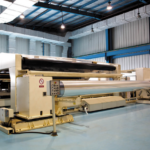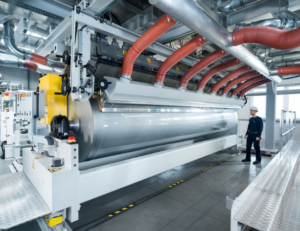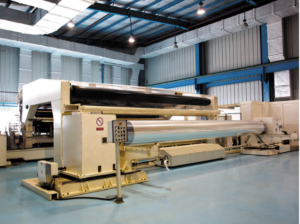The global food packaging industry has been continuously growing over the last few years. According to Fortune Business Insights, the global food packaging market size is expected to grow from $304 billion in 2019 to $463.65 billion by the end of 2027. With such a whopping demand in the food packaging space, the need for improved and innovative packaging solutions is imminent. This is where materials like CPP come in.
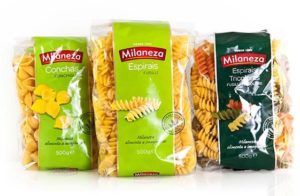
Image Source: http://www.poligal.com
Also known as Cast Propylene, CPP films have earned significant popularity over the last couple of years. CPP films have left no stone unturned in providing better packaging solutions from the food industry to pharmaceuticals, flower industry, textile, and many other areas.
At present, the global cast propylene packaging films market is growing at the speed of light. In 2021, the overall CPP films market has valued at $4558.28 million. It is expected to grow continuously at a compound annual growth rate (CAGR) of 3.22% from 2021 to 2027.
Data from the Flexible Packaging Association (FPA) and the US Census Bureau, US have revealed that the flexible packaging industry was worth approximately $31 billion in 2017, and the numbers have continuously skyrocketed ever since. One of the reasons behind this uninterrupted growth is the ever changing lifestyle and eating habits of people around the world, which has impacted the demand for CPP films.
What Exactly is CPP Film?
CPP is a sub-type of Polypropylene Film (PP). Polypropylene films are low density plastic films known for providing superior packaging integrity while providing an excellent moisture barrier, which makes them stable and, when used in packaging, increases product shelf life.

Image Source: https://www.indiamart.com
What makes CPP stand out from other films is its impeccable heat sealing properties. Used in both traditional flexible packaging and in non-packaging applications, this versatile polymer is dominating the packaging space – thanks to its unique physical and chemical properties. From bread to snacks and fresh produce, cast polypropylene is used in the packaging of a variety of different foods. Not just that, the CPP film is also employed for both retort and non-retort purposes.
How is CPP Different from BOPP and BOPA?
Both BOPP (biaxially oriented polypropylene) and CPP are polypropylene films, and there’s no doubt that BOPP is more popular than CPP. However, the softness and flexibility of CPP films are the unique features that set them apart. The heat sealing properties of CPP films are also better than BOPP films, which require special coatings for heat sealing. While BOPP and BOPA films demonstrate better barrier properties, CPP films exhibit higher impact and tear resistance, better heat-sealing properties, and improved performance at cold temperatures.
What’s more, cast propylene films have high transparency and can easily be printed, making them perfect for use in food packaging. From a commercial standpoint, CPP films are relatively inexpensive and have a higher yield per unit area.
CPP Film Extrusion Lines
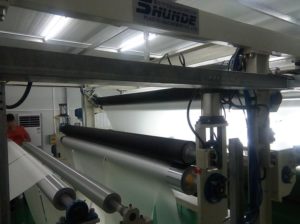
Image Courtesy: http://www.shunde-qd.com/
Macro Advanced Extrusion Systems
CPP Film Extrusion Lines provide the coextrusion solutions for producing the highest quality CPP films. Macro Advanced Extrusion Systems is one of the leading CPP film extrusion line providers. Their equipment is versatile, and films produced through these lines maintain a high degree of clarity and efficiency.
The key features of CPP film extrusion lines include optimized design, screw and die dimensions that ensure remarkable gauge uniformity. In addition, the system encompasses a newfangled winding technology that produces superior quality film rolls. What’s more, the modular design of the Macro Advanced Extrusion Systems ensures it can be modified for future lines to be used for coating and lamination along with extrusion.
The net output of these systems varies between 550-1500 kg/h with a production speed of 350m/min. The maximum film width attained with Macro Advanced Extrusion Systems is up to 4500mm.
The Macro Advanced Extrusion Systems can produce a variety of CPP films, including:
– High-Transparency Films – Suitable for packaging dry foods and bread
– Twist Films – Called so because they can be twisted and used to package confectionary items and candies
– Metalized Films – Coated with a thin metal film, these CPP films are perfect for packaging snack foods
Triple Manifold CPP Film Co-Extrusion Line
Triple Manifold Co-Extrusion Line is a fairly advanced system that works like all-in-one equipment. Apart from extrusion and embossing, the system also does in-line trimming, slitting, and cutting. This recycling element eventually helps reduce the waste rate and save overall cost. The net CPP film output in a Triple Manifold Co-Extrusion Line is around 450kg/hr. It has a maximum width limit of up to 1600mm.
Technological Advancement in the CPP Film Lines
MasterCast – The Widest CPP Film Line
As the demand for CPP film rises, more and more manufacturers are breaking their backs to develop more efficient production lines that can increase output in less time. That’s when the world’s widest CPP film line, MasterCast by SML films, came into being.
The company claims to be the sole provider of the widest film line, owing to the ongoing demand for increased film width and line output. Their new line focuses on producing metalized and laminated films, with a maximum film width of up to 5200mm. The line will have a maximum gross output of 2300mg/hr. It also allows great flexibility in controlling the different layers of the film. For instance, the sealing and metallization layer of CPP films manufactured through MasterCast can be optimized, resulting in a very high layer distributing efficacy. As a result, the costs of raw materials can be reduced, lower power will be consumed, and labor costs will be minimized. All in all, this new technological advancement by MasterCast will help boost the large-scale, economical production of CPP film lines.
CPP Film Recycling – Trends and Technologies
Plastic film recycling is yet another market segment that has been tremendously growing over the last few years. Manufacturers are actively researching various technologies to come up with a recyclable version of CPP film that offers both superior protection and heat-seal resistance. One such initiative has been taken by Coveris, a European flexible packaging film supplier. The company is set to launch a high-performance CPP film that can be recycled. It can be used for the packaging of a vast variety of human and animal food products. Moreover, this recyclable CPP film variety is expected to be stiffer than conventional CPP films, providing added protection to products from external damage. It’s because the recyclable CPP film is made by combining a CPP film print layer with a CPP seal film. This unique combination renders the recyclable CPP film strength and stiffness comparable to the CPP and BOPP characteristics.
What’s more, the new film has high transparency and an immaculate gloss finish. It can be imprinted with flexo and rotogravure printing, making each packaged product aesthetically pleasing to the customer’s eye.
Future developments in the CPP Film Recycling space aim to provide even more value by improving its barrier properties.
Ecological Aspect and Biodegradable CPP Films
One of the most significant advantages of CPP films is that polypropylene itself does not contain harmful additives, including plasticizers, acids, and heavy metals. The absence of these non-irritating components, along with the film’s neutral taste and odor, makes CPP ideal for food packaging. While these polymers can easily be recycled, efforts are being made to process polypropylene films into biodegradable polymers. One such company is Profol that has come up with an additive called EcoPure. The company claims that when treated with EcoPure, CPP films undergo biodegradation. And there’s more to it.
While treatment with EcoPure renders biodegradable properties to CPP films, the material still remains stable during its shelf life. It only undergoes biodegradation once it gets in contact with microorganisms that are typically found in dirt and landfills. Therefore, rather than relying on temperature, UV light, or mechanical stress, the new technology starts biodegradation only when it gets contaminated beyond its shelf life.
Conclusion
Cast Polypropylene (CPP) belongs to a group of polymers that have a considerable advantage over other plastic materials, thanks to their lower specific gravity and technological advancements that have made processing much more cost-effective. This is why more and more customers are moving towards CPP-based packaging for food and non-food related products.


